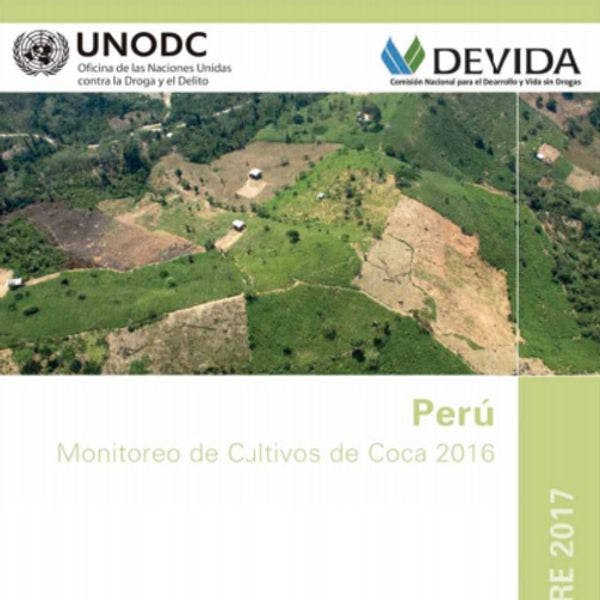Coca Crop Monitoring Report 2016
The 2016 Coca Crop Monitoring Report is the result of joint work between the Government of Peru and the United Nations Office on Drugs and Crime (UNODC) through the Integrated Illicit Crop Monitoring System (SIMCI) that supplies the methodology established by the Global Illicit Crop Monitoring Program (ICMP). The methodological innovations of this System were discussed and agreed upon under the framework of the Technical Monitoring Committee, comprised by technical entities of the national counterparts and headed by the National Drug Commission (DEVIDA) and the United Nations Office on Drugs and Crime (UNODC).
Within this context, the results of this fifteenth Coca Crop Monitoring Report indicated that as compared to 2015 the surface of coca cultivation increased by 9% from 40,300 hectares to 43,900 hectares. This trend was in line with the rise in other coca growing countries, including Colombia and the Plurinational State of Bolivia, which put the global coca cultivation estimate at 213,000 hectares for 2016 (36% more than in 2015). This increase coincided with the growth pf the global cocaine market as stated in the World Drug Report, which reported record levels of seizures, an increased use of cocaine in North America ad Europe and the expansion of trafficking in Asia.
At the national level, the coca growing areas in VRAEM, La Convencion y Lares and Inambari-Tambopata together represented 79% of the total area under cultivation. None of these three areas was subject to interventions by the CORAH Eradication Program. The areas of major increase in absolute terms were VRAEM and Alto Huallaga ewith 1,971 hectares and 922 hectares respectively. In relative terms, the Bajo Amazonas (249%) and Aguaytia (187%) areas had the highest increase in coca cultivation.
Downloads
Topics
Regions
Related Profiles
- United Nations Office on Drugs and Crime (UNODC)
